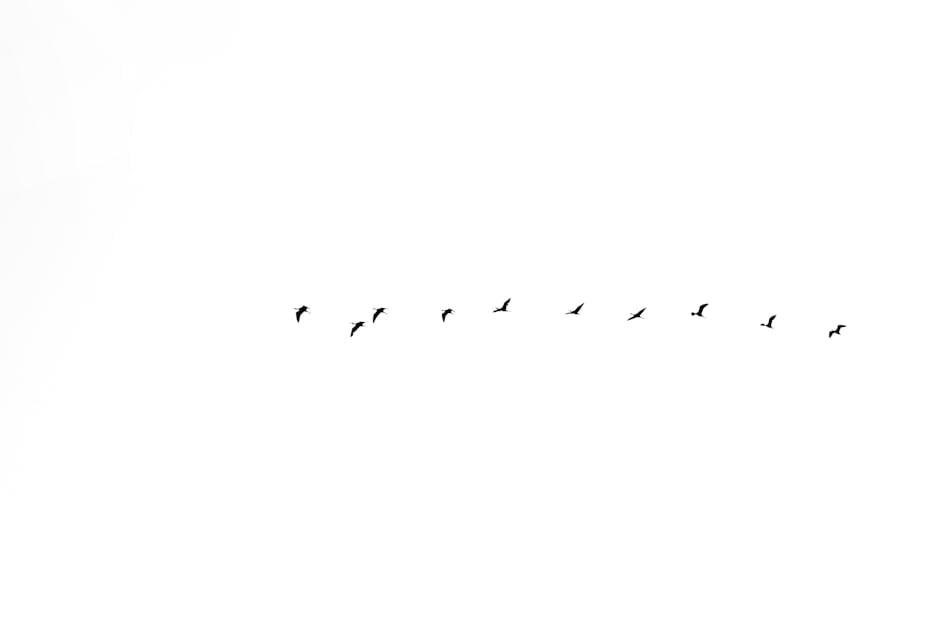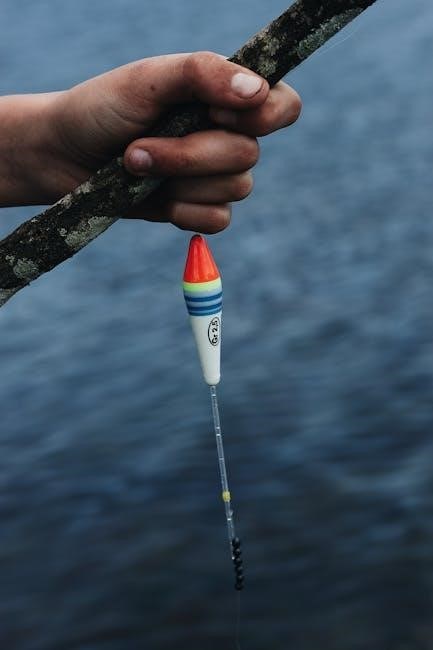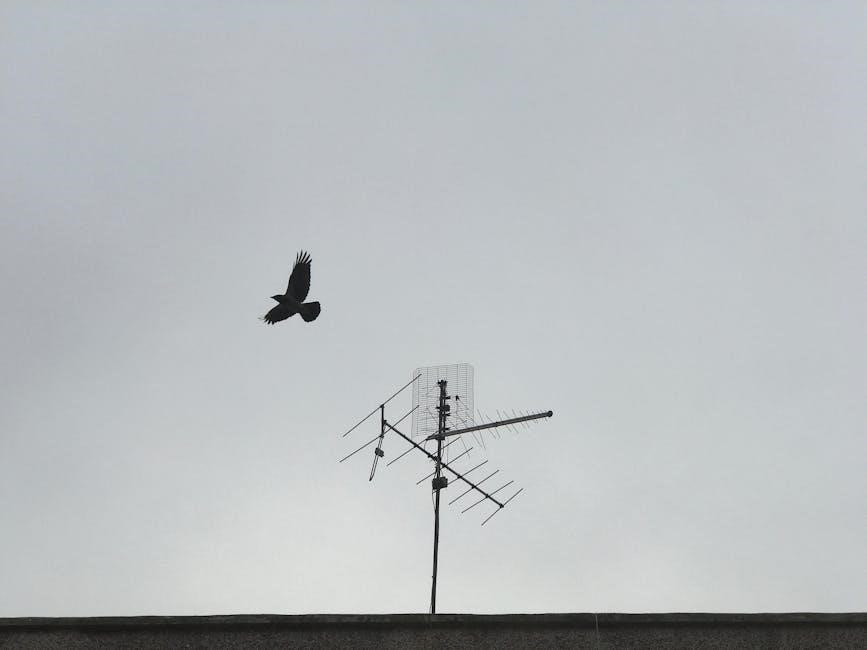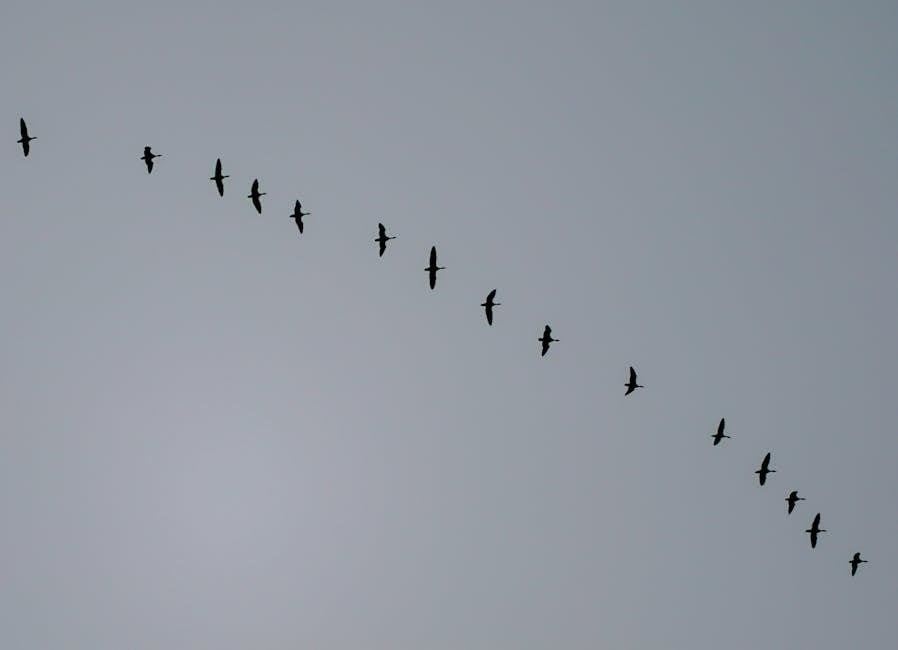Fly line weight is a critical factor in fly fishing, determining balance, casting performance, and presentation. Understanding how to choose the right weight ensures optimal fishing success and enjoyment.
What is Fly Line Weight?
Fly line weight refers to the standardized measurement of a fly line’s mass, typically determined by the weight of its first 30 feet. This measurement is crucial for balancing the fly rod and ensuring proper casting dynamics. The weight is designated using the AFTMA (American Fly Fishing Trade Association) standard, which assigns a specific grain weight to each line. For example, a WF3F line indicates a weight-forward, floating line with a 3-weight designation. Understanding fly line weight is essential for selecting the right line for your rod, fishing style, and target species.
The weight of the fly line affects how it casts, presents flies, and performs in various fishing conditions. Lighter lines are ideal for smaller flies and delicate presentations, while heavier lines are better for larger flies, windier conditions, and longer casts. Properly matching the line weight to your equipment ensures optimal performance and enhances your overall fly fishing experience.
Why is Fly Line Weight Important in Fly Fishing?
Fly line weight is essential for achieving balance and harmony in casting. The right weight ensures the fly rod loads correctly, enabling precise and efficient casting. Proper weight also affects the presentation of the fly, influencing how naturally it lands on the water. Without the correct weight, the fly may sink too quickly or float unnaturally, deterring fish. Additionally, fly line weight impacts the energy transfer during casting, affecting distance and accuracy. Choosing the wrong weight can lead to poor casting performance, reduced accuracy, and even fatigue during fishing. Thus, understanding and selecting the appropriate fly line weight is vital for a successful and enjoyable fly fishing experience.

Understanding Fly Line Designations
Fly line designations are defined by taper type, weight, and buoyancy, guiding anglers to select the right line for specific fishing conditions and techniques.
AFTMA Standard for Fly Line Weight
The American Fly Fishing Trade Association (AFTMA) standard measures fly line weight by the grain weight of the first 30 feet of the line. This system ensures consistency across manufacturers, helping anglers match lines to rods effectively. The weight is determined by measuring the grains (1 grain = 1/7000 of a pound) of the line’s front section. This standard is crucial for balancing gear and achieving optimal casting performance. By adhering to AFTMA standards, anglers can ensure compatibility between their fly rod, reel, and line, enhancing their overall fishing experience. Understanding this system is key to selecting the right equipment for specific fishing conditions.
Reading Fly Line Codes (e.g., WF3F)
Fly line codes, such as WF3F, provide essential information about the line’s characteristics. The code is divided into three parts: the taper type (WF for Weight Forward), the line weight (3), and the buoyancy (F for Floating). This system helps anglers quickly identify the line’s intended use and performance. Weight Forward (WF) lines have most of their weight in the front, aiding in longer casts, while Floating (F) lines stay on the water’s surface. Understanding these codes ensures anglers select the right line for their fishing conditions, target species, and personal casting style, enhancing their overall fishing experience and effectiveness on the water.

How to Choose the Right Fly Line Weight
Selecting the right fly line weight involves matching it to your rod’s specifications, considering the fishing environment, target species, and using AFTMA standards as a guideline.
Matching Fly Line Weight to Your Fly Rod
Matching your fly line weight to your fly rod is essential for optimal performance. Most fly rods are designed to work best with a specific line weight, as indicated by the manufacturer. Using a line that is too heavy or too light can affect casting accuracy and rod balance. The AFTMA standard provides a grain weight rating for the first 30 feet of the line, helping anglers align their line with their rod’s specifications. Testing different line weights on your rod can reveal the ideal match, ensuring smooth casting and efficient energy transfer. Proper pairing enhances casting distance, presentation, and overall fishing success.
Considering Fishing Environment and Target Species

The fishing environment and target species play a crucial role in selecting the appropriate fly line weight. In saltwater settings, heavier lines are often necessary to handle larger species and withstand stronger winds. For freshwater fishing, lighter lines are typically preferred, especially for delicate presentations to trout. The behavior and size of the target species also influence line weight choice; For example, surface-feeding fish may require a floating line, while deeper-feeding species demand a sinking line. Additionally, cold-water environments may require specialized lines designed to maintain buoyancy and flexibility. Matching the line weight to these factors ensures effective casting and presentation, enhancing the overall fishing experience.
Understanding Taper Types and Their Impact on Weight

Fly line taper types significantly influence weight distribution and performance. The most common tapers include weight-forward (WF), double taper (DT), and level taper (LT). Weight-forward lines concentrate weight in the front, enhancing distance casting, while double taper lines offer a more balanced distribution, ideal for precise presentations. Level taper lines provide consistent weight throughout, making them versatile for various fishing conditions. The taper type affects how the line loads the rod and presents the fly, making it crucial to match the taper to your fishing style and environment. Understanding these differences helps anglers select the right line for optimal casting and fishing effectiveness.

Common Mistakes in Selecting Fly Line Weight
Common errors include overloading or underloading the fly rod, misjudging line weight for target species, and ignoring environmental factors like wind and water conditions when selecting a line.
Overloading or Underloading Your Fly Rod
Fly rods are designed to perform best with specific line weights. Overloading with too heavy a line can strain the rod, potentially leading to damage or poor casting performance. Conversely, underloading with too light a line may result in inadequate energy transfer, reducing casting distance and accuracy. Both mistakes can hinder your fishing experience. It’s crucial to match the line weight to the rod’s specifications and consider real-world casting conditions. Experimenting with different line weights and observing how the rod responds is a practical approach to finding the ideal balance for optimal performance and longevity of your equipment.
Ignoring the Role of Leader and Tippet
Many anglers overlook the importance of the leader and tippet when selecting fly line weight. These components are critical for presenting flies naturally and detecting strikes effectively. A mismatched leader or tippet can disrupt the energy transfer from the fly line, leading to poor fly presentation and reduced strike detection. Additionally, using the wrong tippet strength or length can result in missed hookups or damaged gear. It’s essential to balance the leader and tippet with the fly line weight to ensure smooth casting and optimal fishing performance. Neglecting these elements can undermine even the best-chosen fly line, making it less effective in real-world conditions.

Expert Tips for Optimizing Fly Line Weight
Start with the rod’s recommended weight, adjust for conditions, and ensure a balanced setup. Practical advice from experienced anglers emphasizes adapting to environments and maintaining optimal energy transfer.

Practical Advice from Experienced Anglers
Experienced anglers stress the importance of starting with the rod’s recommended fly line weight. They advise adjusting based on fishing conditions, such as wind, water type, and target species. Overloading or underloading can significantly affect casting performance and accuracy. Additionally, they recommend experimenting with different line weights to find the optimal balance for your setup. Many emphasize the value of a smooth, consistent casting stroke, which can often compensate for minor weight discrepancies. Seasoned anglers also suggest paying attention to the leader and tippet, as they play a crucial role in the overall presentation and effectiveness of your fly fishing setup.
Adjusting Line Weight for Different Fishing Conditions
Experienced anglers recommend adjusting fly line weight based on fishing conditions. In shallow water or calm conditions, lighter lines improve presentation and reduce disturbance. For deep water or strong winds, heavier lines enhance casting distance and accuracy. When targeting larger species, a heavier line ensures better control and strength. Seasonal changes also play a role; lighter lines in warmer weather and heavier lines in colder conditions can optimize performance. Experimenting with different weights and observing their impact on casting and presentation is key to mastering this adjustment. This adaptability ensures anglers can effectively respond to varying environmental challenges and fishing scenarios.
Mastery of fly line weight is essential for balance, casting, and presentation, ensuring a successful and enjoyable fishing experience.
Final Thoughts on Mastering Fly Line Weight

Mastering fly line weight is key to optimizing casting performance and presentation. Always consider rod matching, fishing conditions, and species. Test different weights to find balance, ensuring smooth casting. Adjust for wind, water depth, and fly size. Avoid overloading or underloading, as it affects accuracy. Remember, the right weight enhances control, distance, and enjoyment. Use the AFTMA standard as a guide but trust practical experience. Experiment and adapt to conditions for consistent success. Proper line weight ensures harmony between rod, line, and fly, making every cast more effective. Pay attention to taper types and their impact on weight distribution. Balance is everything in fly fishing, and the right line weight achieves it.

